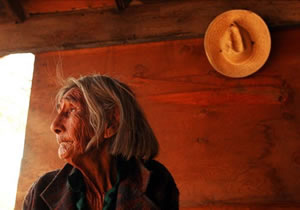 |
 |
 |
 Editorials | Issues | November 2006 Editorials | Issues | November 2006  
Tiny Indigenous Groups Agree On 'Death Pact' Protest
 El Universal El Universal


| | The Cucapá were the first settlers of the Valle de Mexicali and Delta del Río Colorado, approximately three thousand years ago. |
In protest of what they say is neglect by the government, the 54 remaining indigenous Kiliwa people in California have agreed to stop reproducing and let their ethnicity die out.

Elias Espinosa, who serves as the community´s leader, said they had reached a "death pact." He is married to Mónica González, an ethnic Cocapá, who says her 260-member tribe has decided to do the same.

The Kiliwa, who inhabit northern Baja California, have traditionally subsisted through hunting and gathering. However, they say they have been forced off of their ancestral lands in recent years, which, along with environmental degradation, has forced them to make a living by working on farms and ranches on the lands that were once theirs.

Espinosa has been a vocal advocate of increased government aid for the group, and he met with each of the nation´s presidential candidates during their tours of the state.

However, he said all of his lobbying efforts were in vain, and the community has decided to let itself die out. Their language is already on the verge of extinction - only five people speak it, and all are older than 75.

Javier Sánchez Corona, Baja California´s human rights prosecutor, said that the state government´s indifference to the plight of its indigenous peoples equates to a "policy of extermination."

"They only receive (from the state) very small amounts of support so that they can survive and sustain their traditions," Sánchez said. "In this way, it is basically a policy of extermination, although it isn´t on purpose."

Patricia Rivera Reyes, head of the Consultancy for the Indigenous Peoples of Northern Mexico, accused the state government of doing little to stop the loss of ancestral lands of the Kiliwa. She added that the Cocapá, Kumeyaay, Paipai and Cochimí people face similar difficulties.

None of Baja California´s indigenous groups are numerous - the biggest community is the Paipai, whose population stands at around 400, while around 360 Kumeyaay live near the northern city of Tecate.

According to Victor Clark Alfaro, an anthropologist and head of the Binational Human Rights Center in Tijuana, the state´s native indigenous population is not over 1,500. He said they have been displaced in importance by about 20,000 Mixtecs who have immigrated from Oaxaca, and whose better organizational and lobbying skills have allowed them to capture greater amounts of government aid.

´SENSATIONALIST´

However, he added that the Kiliwa´s "death pact" was "irresponsible and sensationalist."

He said the group had stopped having children, but that was due to the fact that none of the community was of childbearing age - young Kiliwas have abandoned the community for urban life.

In Mexico City, Indigenous Affairs Secretary Xóchitl Gálvez also downplayed the agreement, saying it was a "strong declaration, but they´ll continue having children."

"On the Mexican side, it´s true, there are less Kiliwas," Gálvez said. "But in the United States this ethnicity and their language is still strong."

She added that she knew Espinosa and is wife González, "and they have a daughter who is Kiliwa-Cocapá." | 
 | |
 |



